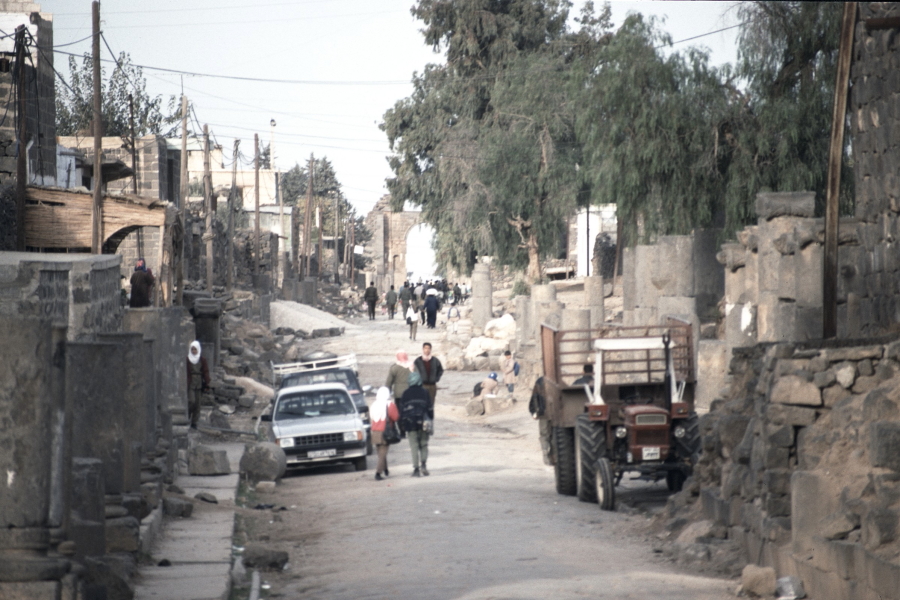Monday 29th November 1993 6:00 to 8:30am
It was worth getting up early. The 2nd century Roman theatre, converted around 6th century to a citadel by construction of fortifications and later buried under sand was excavated and renovated in mid 20th century. It is an enormous and, maybe because it was buried in sand, well preserved theatre. The guide is very enthusiastic, giving dimensions and pointing out the various columns and arches. It is certainly a splendid theatre with its tiered seating and it colonnaded stage.
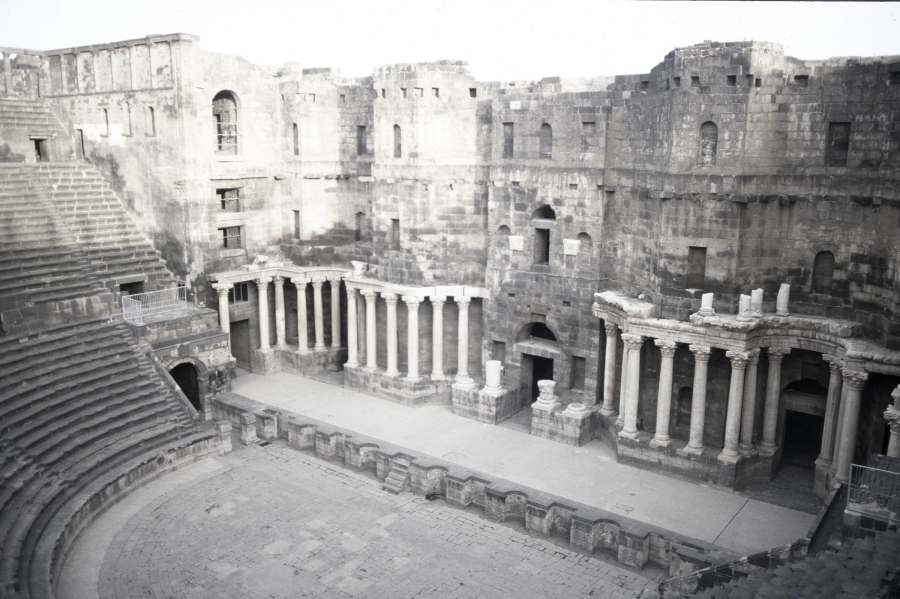
From the top there is a view of what the guide identified as the "extra mural town", outside the walls of the old city. I can see workmen being brought in to work on the road construction. They arrive in a cart pulled by a tractor and jump down with their pick and shovels. Children, mostly very young, are appearing as if from nowhere and heading off in the same direction, I presume to an unseen school.
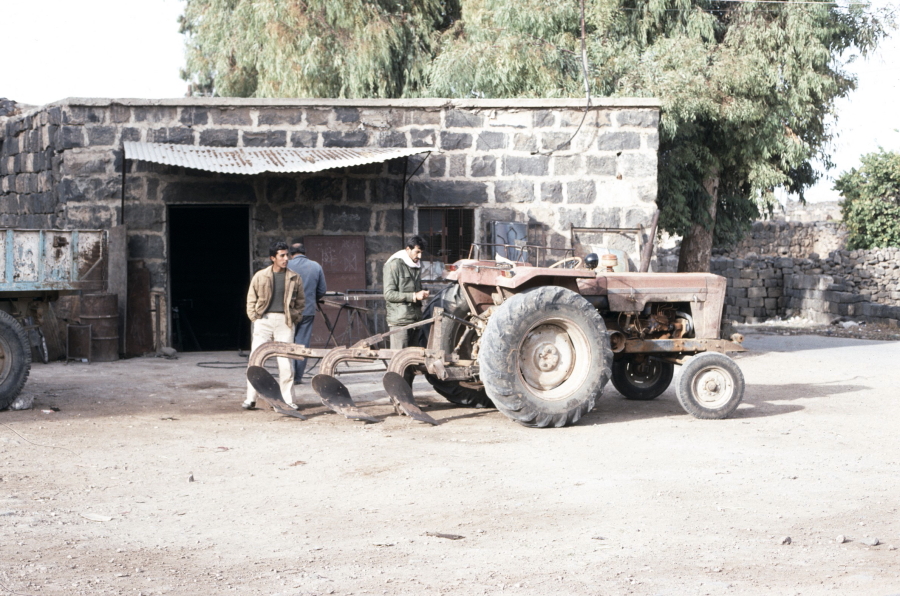
We leave the theatre. It is not yet 8:00am. More children appear accompanied by several women dressed in long simple but colourful dresses. A bright blue is most eye catching.
We wander around among the ruins of the Roman city: Columns here, streets there, bits of the original buildings, piles of stones, some sorted ready for further renovation work. People keep appearing from between the stones, going about their daily lives. Babies crying, children shouting. Families are living here in the middle of this archeological site. I can hear them, but how do they live amid these ruins?
Television ariels protrude from the roofs of the stone houses, if they can be described as such. The street is a warren of stone burrows with a door here and there. Almost no windows. Piles of stones with doors and TV ariels from which people emerge, as if from nowhere. I wonder about their electricity supply (for the TVs) & is there running water?
A small group is crowding around a small shack. As I get closer I see they are queuing for bread. Women and children are leaving with heaps of large pieces of very thin, apparently crisp, bread. They look like 15 inch (40cm) pancakes. A few women stop and spread their bread out on the tops of the broken columns.
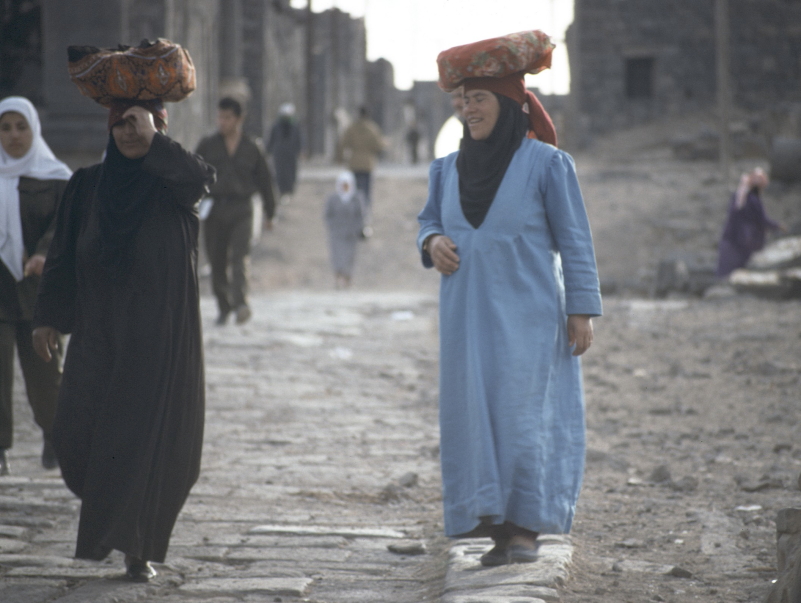
More people appear and a few vegetable shops open. The guide explains that we are still in the "intra mural" part of town. Not many people live here, making their homes from the fallen stones and Roman ruins, like squatters making the best they can from the semi ruins of a civilisation that ended centuries ago with only the incongruous TV ariels as a gesture to the twentieth century! Most of the people live in the modern extra mural town that we saw from the rim of the theatre.
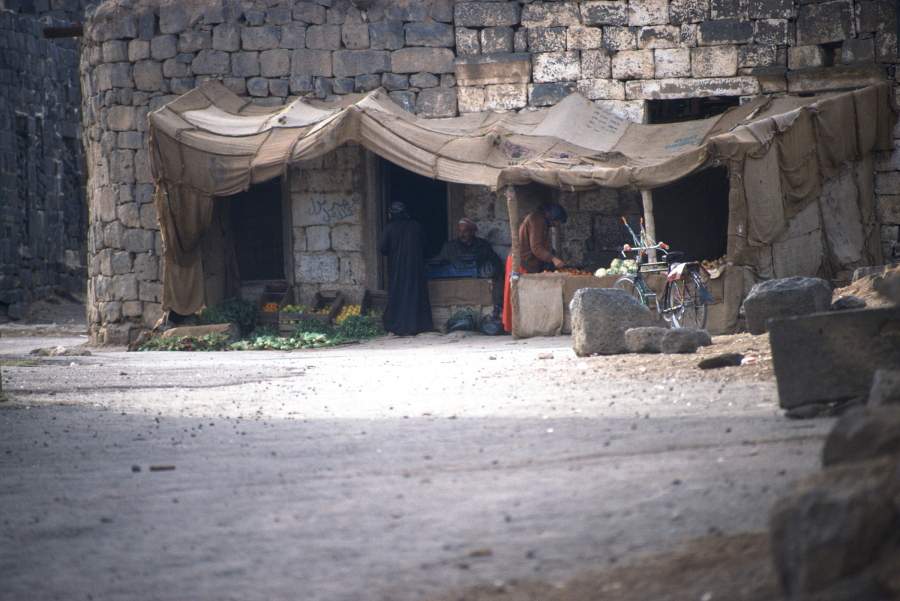
I wonder whether these intra mural people are too poor to move out of the ruins or whether they willingly chose to live this life. They all look cheerful and smile and wave as we walk past. They must be used to visitors here. Is that it? Do they make their living from the tourists? The guide is talking again. He says that some people don't like these intra mural dwellers and want them moved out and rehoused so that excavations and restoration can be completed.
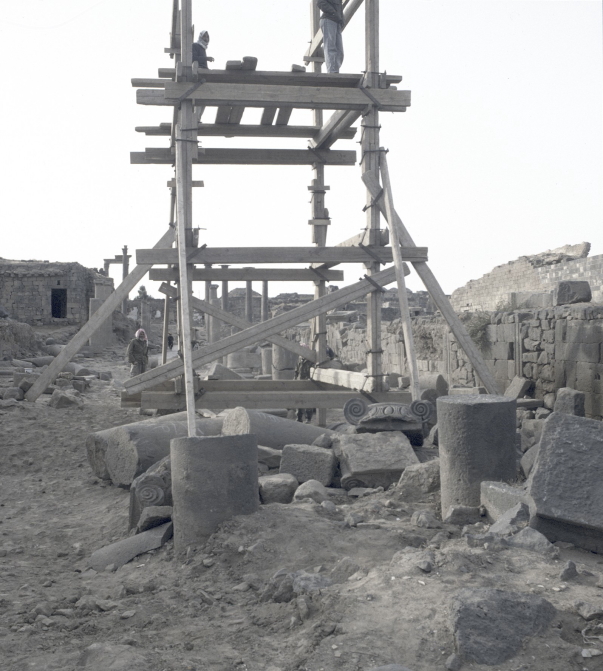
I imagine the archeologists taking on one huge 3-d jigsaw puzzle challenge, identifying the pieces, numbering them and then rebuilding. If they restore this town to the same standard as the theatre it will be magnificent but would they let the intra mural dwellers return to live in the renovated Roman villas?
But then I look around again. The intra mural dwellers are reshaping the old Roman town to suite their needs. Isn't that what happens across history? The restoration and preservation would not return the city to a pure state representing one point in time but to a state of adaptation which took hundreds of years; like the theatre: 2nd to 6th century adaptations. In the theatre case it was buried and frozen in time, but these ruins will have been adapted for another four hundred years, not by city planners or architects, there is no grand design, just make do and mend. People will not travel across the world to see these people in apparent (if not real) poverty but they will for a restored Roman city - and it certainly seems that all the parts are here waiting to be reassembled.
More photos of Inside the Walls of Bosra.
This really is a whistle stop tour. By 8:30 we are on the bus again heading towards Damascus. It is mostly motorway, so unlikely to be the road taken by St. Paul.
More about Bosra and the many bits I didn't see on my whistle stop tour.
